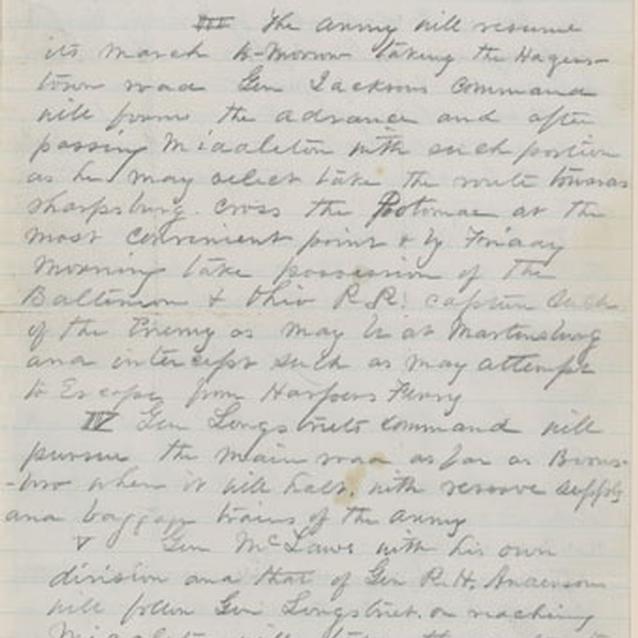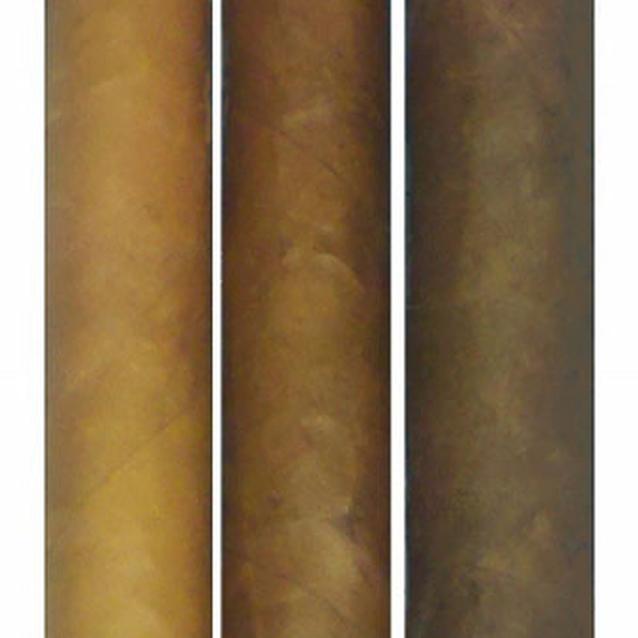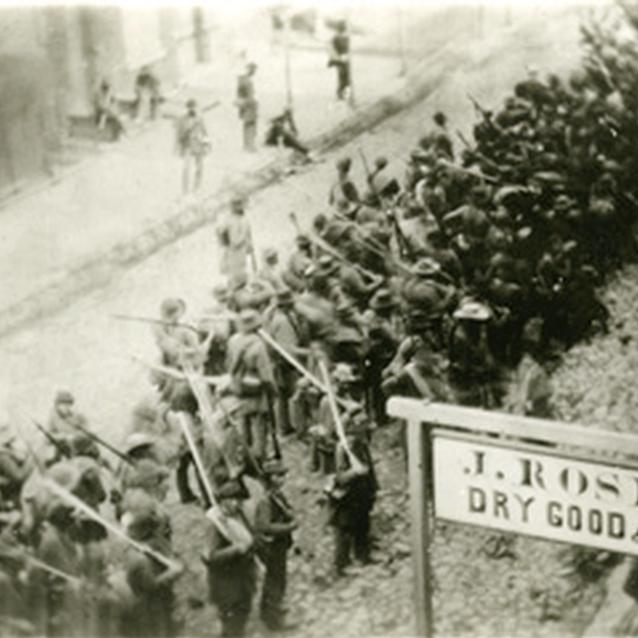On September 9th, Lee ordered his Chief of Staff, Lt. Col. R.H. Chilton, to write and distribute the plan: Special Orders 191. Walter Taylor, a member of Lee's staff, wrote in his memoirs that he was not present to "supervise the promulgation" of Special Orders 191, suggesting that Taylor was normally responsible for the clerical aspects of issuing orders. This may explain the confusion surrounding the delivery of the orders and absence of a paper trail. As written, the order laid out the plans of the Confederate army for the following three days (September 10-12), splitting Lee's army, and explaining each assignment.
The Orders

Jackson was to go back across the Potomac, capture Union forces at Martinsburg, Virginia, and cut off the escape of the Federal garrison at Harpers Ferry, Virginia. Gen. Lafayette McLaws was to take Maryland Heights, then capture any Federals fleeing from Harpers Ferry. Gen. John G. Walker was to take possession of Loudoun Heights, then assist McLaws and Jackson to capture any fleeing Federals.
While the three Confederate columns closed around Harpers Ferry, Gen. James Longstreet was sent to Boonsboro, Maryland with the reserve and Gen. James Ewell Brown "Jeb" Stuart's cavalry was to detach a squadron of cavalry to screen the route of the army and bring up stragglers. Gen. D.H. Hill was to form the rear guard of the army as they left Frederick. After finishing their tasks, the army was to reunite in either Boonsboro or Hagerstown.
Chilton initially made seven copies of the original orders for Jackson, Longstreet, Walker, Stuart, McLaws, Taylor, and a file copy to Confederate President Jefferson Davis. When the orders were written, D.H. Hill fell under the command of Jackson. As such, he received his orders directly from Jackson. Special Orders 191, however, defined Hill's new role as an independent commander and Chilton took it upon himself to pencil Hill a copy as well. Hill was sent the orders from Jackson, which he kept, and from Chilton, which he said never made it to his camp.
On September 10th, the plan went into motion and the Confederates moved out of the Frederick area. However, Lee was leaving behind more than the town and its people. Somewhere in a field, waiting for the Union Army, was a key to disaster: an envelope containing a copy of Special Orders 191.
Cigars

Two cigars were in the envelope containing Special Orders 191; however, historically there have been many references to three cigars having been found. Whether there were two or three cigars in the envelope had no effect on the significance of the order itself, yet it continues to fascinate people interested in the "Lost Orders." Various soldiers' accounts suggest there were two or three cigars. The most reliable account is a letter written by Union Sergeant John Bloss in which he states that there were two cigars.
Rare Photograph

Historical Society of Frederick County, Maryland
This rare photograph shows the Confederate Army marching through Frederick, Maryland. Ragged and hungry, the men were still confident of victory. The Union Army, though larger and better equipped, was in disarray after the Second Battle of Manassas and Lee expected little resistance from them soon. However, what McClellan lacked as a battlefield commander, he made up for with his ability to organize and reenergize his soldiers. By the time they reached Frederick, he had his army, including the artillery, refitted, reorganized, and resupplied.
"We marched through several towns in Maryland and through fine farms and stopped at Frederick City, Md., on the Monocacy river, remained there one day and washed our clothes in the river and put them on wet. We were trying to drown some of the lice of which we had plenty. We had not washed our clothes in about a month, and the bugs were getting unbearable."
-William Judkin, 22nd Georgia
Part of a series of articles titled The Lost Orders.
Previous: McClellan Gets A Hold of the Orders
Next: Confederate Plans
Last updated: February 3, 2015
